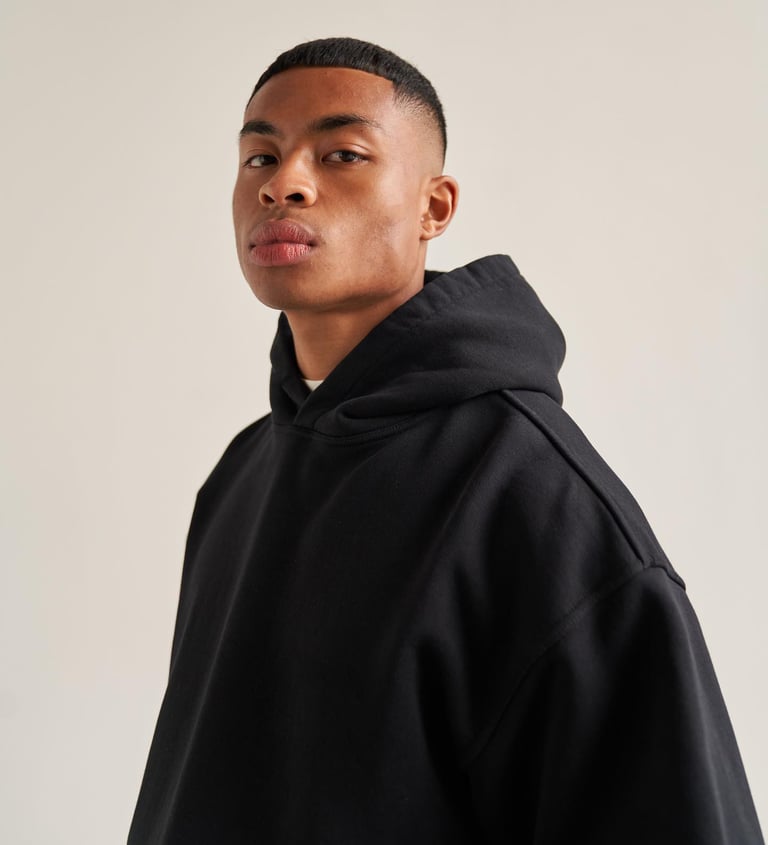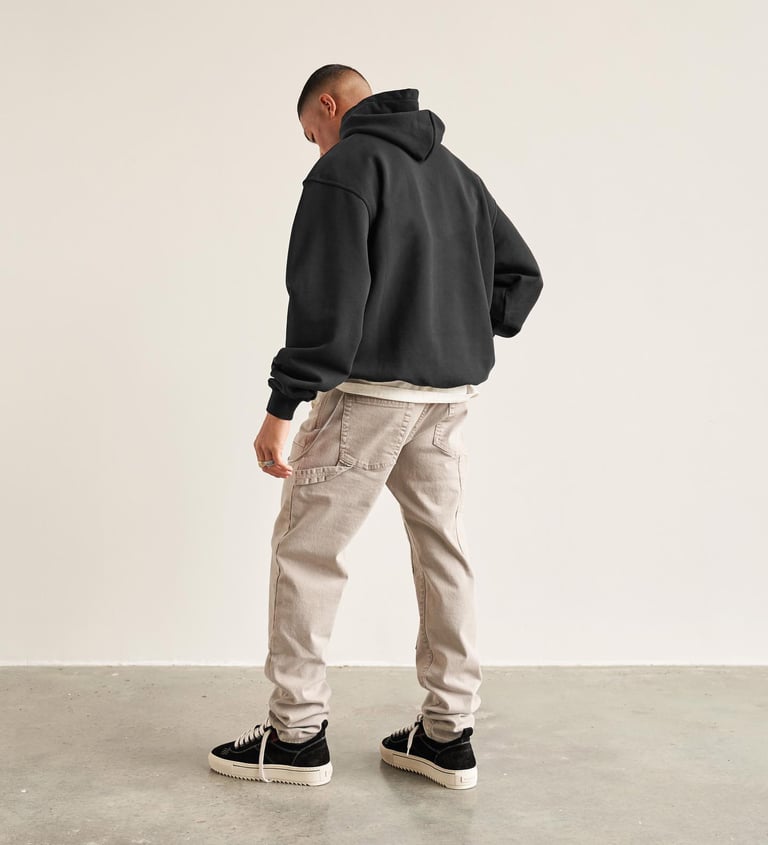The Ultimate Guide To Start Your Clothing Brand
By Mohammed Ahmed
8/28/20247 min read
Starting your clothing brand, it can be daunting but exciting. I remember starting my own brand in 2017 for the first time (M3RCY Clothing). I started it with around £500 and a dream, I knew absolutely nothing but just dove straight in anyways. To top it off, I had no fashion sense either!
There were a lot of things I learnt along the way both the easy way, and the hard way. Everything from marketing, fabric selection, negotiation all the way to brand deals and sponsorships. The many years I ran this brand and others were all excellent learning experiences.
I created this guide to give you the best chance of success when starting your brand. It includes everything I wish I knew when I started. And remember, if you have any questions or need any help, I'm available here!
Step 1 - Research
The first step you need to take is to research your market. This will give you a good idea of what your potential customers like and dislike, what your competitors are doing and what's trending right now. here's what you need to do:
Customers: Find your target market. Who are you selling to? What do they like and dislike? Where are they currently shopping for clothing and what kind of clothing are they buying? Try to define what your typical customer looks like.
Define your niche: Decide on the specific niche for your brand. This could be based on style (e.g., streetwear, athleisure), demographic (e.g., teens, working professionals), cause (e.g., sustainable fashion, ethical clothing) or community (e.g. shounen anime watchers)
The current scene: Once you've done the above, look at your competitors and what they are selling. Try to find out what their best selling items are and look for similarities or themes across competitors.
Trends: Identify what things are trending in your scene and whats popular at the moment.
Once you've answered these main questions. get them in writing somewhere so you have something to refer to during marketing and other steps.
Step 2 - Brand Development
Brand Name and Logo: Choose a memorable brand name and create a logo that represents your brand's identity. Ensure the name and logo are original and not trademarked. Also, make sure the name is not difficult to remember. Pro tip: don't choose names that are of another language, or are difficult to recall. You want your customers and potential customers to easily be able to recall your brand. So make sure your brand name doesn't look like a password!
Brand Identity: Develop your brand’s voice, color scheme, and overall aesthetic. This will be reflected in your products, packaging, and marketing materials.
USP (Unique Selling Proposition): Define what sets your brand apart. This could be design, quality, price, or an ethical standpoint.
Step 3 - Design Ideation
Once you've done your research, now comes the fun part. Coming up with designs.
Download some mockups of the type of clothing you're looking to make and come up with the designs for your clothing. You can do this on paper or online using tools like Canva, Photoshop or Illustrator. I recommend using Photoshop as this will also help you practice using the software which will give you a great skillset that will come in handy for the future. If you do decide to use pen and paper for this step, you will need to digitize your design. Most manufacturers will charge you extra for this, but we don't (shameless plug) so get in touch.
Use tools like Mock It or Canva to see what your designs will look in real life worn by someone.
Step 4 - Tech Pack Creation
Now that you're happy with your design, create a tech pack. A tech pack is a file that shows manufacturers exactly how you want your garment to look. It includes things like the design, the features, colours, sizing and fabric selection. If you need a tech pack template, download this free one I made.
Step 5 - Look For A Manufacturer
Use sites like Alibaba to look for manufacturers. Make sure you look at the companies profile page to make sure that they actually have a production facility, and are not just scammers or middlemen. Enter your minimum order quantity and contact manufacturers who fit your criteria for quotes. Here are some tips to save you from getting ripped off:
Pretend that you're just a worker - Act like you have a boss that makes decisions and it's not just yourself. This makes manufacturers think you're looking for a long-term partner instead of a manufacturer for a one and done clothing order. This will get you more competitive pricing.
Contact multiple manufacturers and leverage different quotes - Telling manufacturers that another competitor is offering to do it cheaper will almost always help you get a reduction in price.
Submit RFQs - Submitting requests for quotations will allow manufacturers to contact you with their quotes for your design. This is effective as manufacturers know they are competing against others for your business and also because they can only respond to a limited number of RFQs so they want to make their shot count.
Make sure you are aware of all of the various custom duties, import taxes, VAT and import fees when ordering from abroad. This can get very complicated and often results in unexpected charges. I found this out the hard way when I started. If you'd rather not deal with this headache, contact me as we are UK based and have a factory in Pakistan, so we deal with all of these fees and procedures meaning no nasty surprises for you.
Step 6 - Order A Sample
Once you have selected a manufacturer and are happy with the price, order a sample. Upon its arrival, check to see if you like it. Make sure you check things like fabric quality, weight, design imperfections and stitching quality. If you are unhappy with anything or want something changed, convey this to the supplier and update your tech pack.
Step 7 - E-commerce and Sales Channels
Create a Website: Build an e-commerce website where customers can browse and purchase your products. Platforms like Shopify, WooCommerce, or Squarespace are popular options but, I recommend Hostinger. I have used Squarespace, Square and Shopify before, but for me, none are better than Hostinger in terms of both price and website. My own website for The Custom Blanks Co is built using Hostinger. (For full transparency, I do get a little commission for every sign up, but I genuinely do like the service they provide and do recommend them myself) Click here to check them out and get 20% off.
Social Media Presence: Set up accounts on social media platforms like Instagram, Facebook, and TikTok. Share engaging content that reflects your brand and attracts followers. I especially recommend that you document your journey on social media as this establishes trust with customers but also increases reach. I am currently writing a social media guide for brands which I will also publish here.
Marketplaces and Boutiques: Consider selling your products on platforms like Etsy, Amazon, or Depop.
Step 7 - Place Your Order
If there are any major changes you need based on your sample, either order another sample or place a full order. Now you have some time whilst your order is being prepared. Use this time to focus on your branding and marketing, and ensuring that your website is easy to use and intuitive. This is the time to polish up everything to ensure a successful launch.
Step 8 - Marketing and Promotion
Social Media Marketing: Use social media to build your brand’s presence. Share product photos, behind-the-scenes content, and engage with your audience. Social Media Marketing is different to advertisement, please remember this. Don't push your customers to buy your products with every post. You want to instead ensure that you are posting engaging content such as behind the scenes, edits, informative content that would pique your audiences interest which will then make them want to look into your social media and brand.
Influencer Collaborations: Partner with influencers who align with your brand to reach a broader audience. Influencers are a very effective way of spreading brand awareness and getting eyes on your products. Not only this, you also get to benefit from the trust their audience have with them. Trust is critical, as a new brand, your levels of trust will be very low, so leverageing audiences high trust from influencers is a excellent strategy.
Advertising: Look into paid advertising on social media, this is a sure-fire way to get eyes on your brand.
Email Marketing: Build an email list and send regular newsletters with product updates, promotions, and exclusive offers. This is not as important as the other 3, but is something to keep in mind and do as you grow.
Step 9 - Launch Your Brand
Once you've done the above steps and polished everything up. Then it's time to finally launch your brand. As a new kid on the scene, it's likely that you wont have much hype or thousands of eager fans, but this is where you put the hard work in and begin to grow. Making regular social media posts, creating great designs, collaborating with influencers. From now on, your clothing brand is official and great things await.
Final Words
This guide will be incredibly helpful to you in your journey, I have purposely kept it fairly short and succinct, only including the most important details and the most beneficial information. Starting a clothing brand can be difficult, and it likely will. But it is extremely rewarding too. There is no feeling like seeing your clothing being worn outside in the real world. Just imagine going out and seeing someone wearing a piece you designed and now imagine how great that would feel. There's no time like the present to start, as the saying goes, The best time to plant a tree was 20 years ago. The second best time is now.
If you need any help or guidance, or have any questions about starting up or clothing, get in touch and I would be happy to help.






SHOWROOM ADDRESS
57 Kimberley Street
Oldham
Greater Manchester
OL8 4NX
